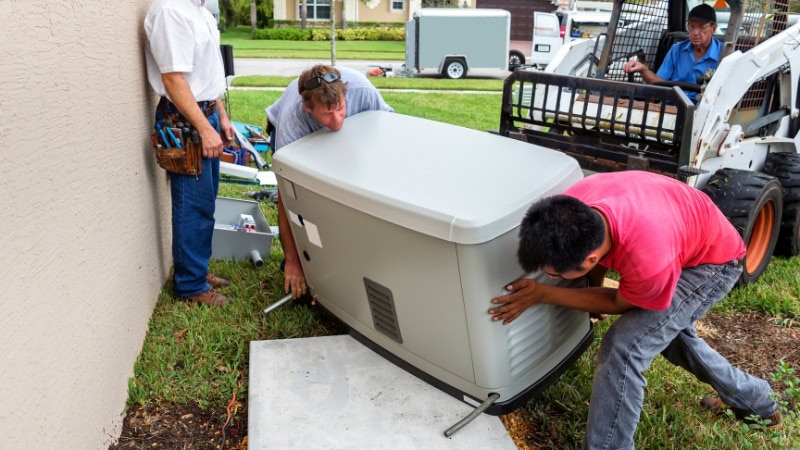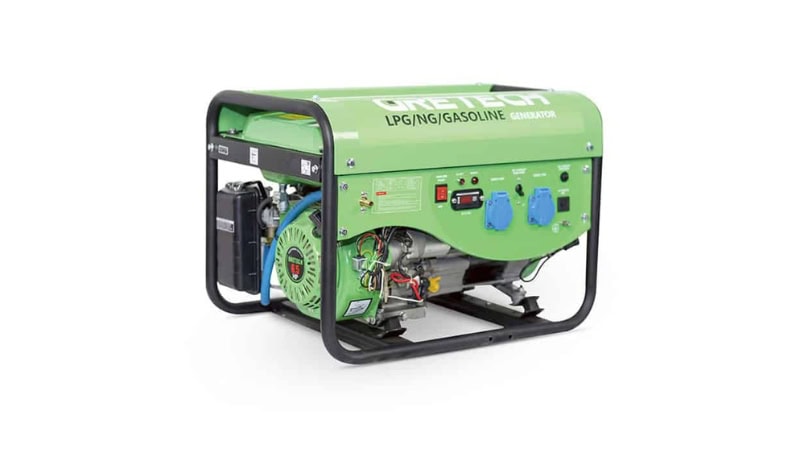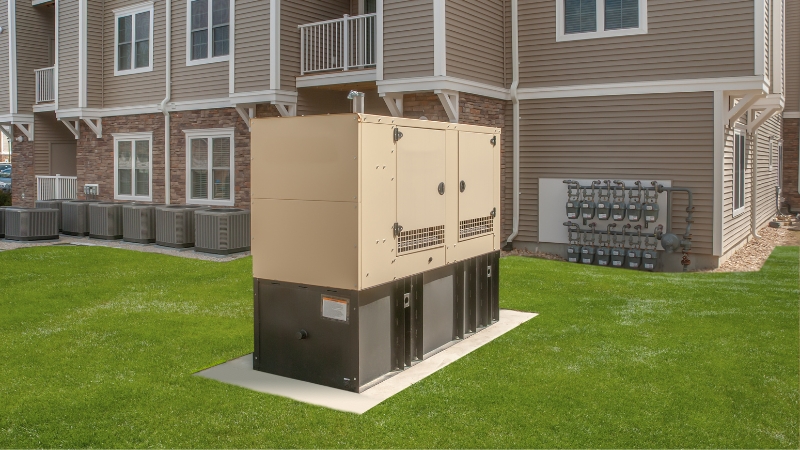
Have you ever thought about installing a home generator during a power outage? Have you ever acted on this idea, and if so, was it successful or did it lead to failure? Hooking up a generator to a house must be done with care and precision to ensure safety and functionality. An incorrect connection can create serious hazards, including electrical fires, damage to your home’s circuitry, or even electrocution. This guide will walk you through the correct and safe methods to hook up a generator to your house, ensuring you are prepared for the next outage.
Why Proper Generator Connection is Critical

Before diving into the “how,” it’s essential to understand the “why.” Connecting a generator isn’t as simple as plugging it into a wall outlet. Backfeeding—the dangerous practice of powering your home’s wiring by plugging the generator into a regular outlet—is extremely risky. It can overload your circuits, damage your generator, and, most alarmingly, endanger utility workers repairing downed lines. A proper connection ensures that power is safely distributed, your generator operates efficiently, and your home and community stay safe.
Understanding Your Connection Options
There are several ways to hook up a generator, each with varying levels of safety, convenience, and cost. The right choice depends on your generator’s power output, your home’s needs, and your budget.
The Emergency Outlet Method
This is the most basic method, often used temporarily with smaller portable generators.
How it Works: You use a heavy-duty, outdoor-rated extension cord to plug essential appliances (like a refrigerator or lamp) directly into the generator. The appliances must be within cord reach of the generator, which should be operated outdoors and away from windows.
The Drawbacks: As highlighted in search results, manufacturers do not recommend this method for powering a house through its wiring . It’s easy to overload the extension cord or generator, and it doesn’t allow you to power hardwired appliances like your home’s furnace or well pump. It’s strictly for a few individual items.
The Inlet Box and Interlock Kit Method
This is the most recommended and code-compliant method for safely connecting a portable generator to your home’s electrical system.
How it Works: A generator inlet box—a special outdoor-rated outlet box—is permanently installed on the exterior of your home. From this box, a heavy-gauge cable runs to a dedicated double-pole breaker in your main electrical panel. An interlock kit is a metal or plastic plate that gets installed on the panel. This plate physically prevents the main breaker and the generator breaker from being turned on at the same time, eliminating the risk of backfeed .
The Process:
- Install the Inlet Box: A qualified electrician mounts the weatherproof inlet box on your home’s exterior.
- Wire to the Panel: They run a cable from the inlet box to a new breaker in your main service panel.
- Install the Interlock Kit: After installing, ensure you turn the main breaker OFF before you can switch the generator breaker ON.
Advantages: This method is far safer and more convenient than the outlet method. It allows you to power hardwired appliances and multiple circuits in your home through the existing wiring. It is also significantly cheaper than a fully automatic system. One DIY enthusiast reported spending only $600 on the electrical work for a similar setup, saving thousands compared to a full system.
The Transfer Switch Method
A transfer switch serves a similar purpose to an interlock kit but offers more granular control.
How it Works: A transfer switch is a separate panel installed next to your main service panel. It is pre-wired to specific, essential circuits in your home (e.g., furnace, kitchen, lights). The generator is connected to the transfer switch via an inlet box. To switch to generator power, you move the switches on the transfer panel from “Line” to “Generator.”
Types of Transfer Switches:
- Manual Transfer Switch: Requires you to manually flip the switches.
- Automatic Transfer Switch (ATS): Used with standby generators, it detects a power outage and automatically switches the power source.
Why a 4-Pole Switch? When selecting a manual transfer switch, it’s crucial to choose one with four input terminals (two for “phase” and two for “zero”) to properly handle both the live and neutral wires from your generator .
The Fully Automatic Standby Generator System

For the highest level of convenience, reliability, and security, a permanently installed standby generator is the best option.
How it Works: A large standby generator, which runs on natural gas or propane, is permanently installed on a concrete pad outside your home. It is connected to your home’s fuel line and electrical system. An Automatic Transfer Switch (ATS) constantly monitors the grid power. Within seconds of an outage, the ATS commands the generator to start and automatically transfers the home’s entire electrical load to the generator. When utility power returns, it switches back and shuts the generator down.
Integration with Modern Energy Systems: Modern energy gateways, like the Sigenergy Gateway HomeMax, are taking this further. They can provide seamless backup power by intelligently switching between the grid, solar panels with battery storage (ESS), and even a generator, all with a 0 ms disruption time for a truly uninterrupted power supply .
Steps for Safe Generator Connection & Operation
Regardless of the connection method, following a strict safety protocol is non-negotiable.
- Ground Your Generator: Proper grounding is a critical first step. The generator must be grounded to dissipate excess electricity and prevent shock hazards. Always refer to the manufacturer’s instructions for the correct grounding procedure.
- Turn Off the Main Circuit Breaker: Before connecting your generator to the inlet box, go to your main service panel and turn off the main circuit breaker. This isolates your home from the grid and is the single most important step to protect utility workers.
- Start the Generator: Place the generator outdoors in a well-ventilated area, far from doors, windows, and vents. Exhaust fumes contain deadly carbon monoxide. Let the generator run for a few minutes to stabilize.
- Connect the Cord and Transfer Power: Plug the generator cord into the inlet box. Then, at your electrical panel (using the interlock kit) or transfer switch, switch your home’s circuits to generator power.
- Monitor the Load: Do not exceed your generator’s rated wattage. Start high-wattage appliances one at a time to prevent overloading.
- Shut Down in Reverse Order: When utility power is restored, first turn off and unplug all appliances. Then, switch your interlock/transfer switch back to utility power. Turn the main breaker back on. Finally, disconnect the generator cord and shut down the generator.
Final Recommendations
Hooking up a generator to your house is a task that blends preparedness with a serious responsibility for safety. While the inlet box and interlock kit method offers the best balance of safety, capability, and affordability for most homeowners, the best choice is always the one that is installed correctly and used according to the National Electric Code.
For any installation that involves wiring into your main electrical panel, hiring a licensed and qualified electrician for a professional installation is strongly recommended. They will ensure the work meets local electrical codes, which is crucial for your safety and your home insurance. With a proper connection, your generator will provide peace of mind and reliable power for years to come.
Frequently Asked Questions
How do I hook up a generator to my house safely?
To safely hook up a generator to your house, always use a manual transfer switch or heavy-duty extension cords. Avoid direct connections to prevent backfeeding, which can cause serious hazards.
Can I just plug my generator into a wall outlet?
No, this is extremely dangerous and should never be attempted. This practice, known as “backfeeding,” can overload your circuits, damage your generator and appliances, and most critically, electrocute utility workers repairing power lines. It also violates electrical codes in most jurisdictions.
Can I use extension cords to connect my generator to appliances?
Yes, you can use heavy-duty extension cords rated for outdoor use to connect your generator to appliances. Ensure the extension cords are suitable for the power needs of the devices you’re connecting.
What should I do if I am unsure about hooking up the generator?
If you’re unsure about hooking up a generator, consult a licensed electrician. They can ensure safe installation and compliance with local electrical codes, protecting both you and your property.
How far from the house should I place my generator when operating?
Always place your generator at least 20 feet away from your house, with the exhaust directed away from windows, doors, and ventilation openings. This prevents deadly carbon monoxide from entering your home. Never operate a generator in a garage, even with the door open.
